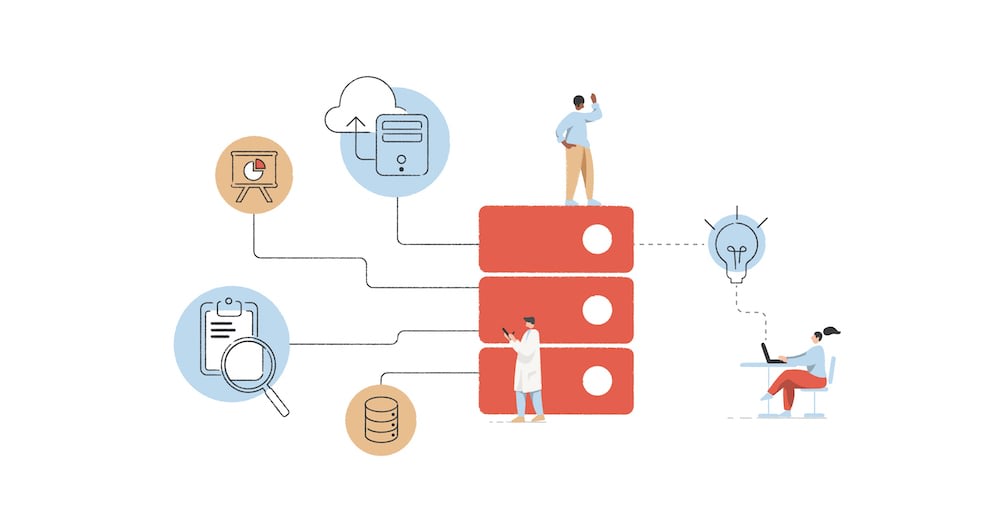Data
Apr 01, 2021
Understanding data and analytics maturity: A focus on Strategy and Alignment

In our first article, we introduced our data & analytics maturity model and discussed why understanding maturity is crucial in delivering digital transformation successfully. In this article, we explore the ‘Strategy’ and ‘Alignment’ layers of our maturity model.

‘Strategy’ and ‘Alignment’ are the basis of our maturity model. These elements are the most fundamental requirement of any data & analytics programme and involve defining a clear strategy, use cases, and KPIs. They address the need for strong leadership, clear direction, and business sponsorship to ensure that the end result is considered throughout the delivery process and that external factors do not result in costly short-term distractions.
Developing your strategy
We recommend a three to five year timeframe for your data & analytics strategy, retaining focus on your ‘true north’ by supporting your programme with the right mixture of sponsors, reviewers, and collaborators. This strategy will be based on an analysis of your organisation that is carried out as part of the programme definition.
An effective strategy should start with an articulation of your vision, explaining what will be achieved and how this will impact the organisation’s look and feel. It is important to note that many of the benefits realised will be qualitative, so explaining the business experience here is critical.
We recommend that you define programme principles that will allow you to explain how your vision impacts design decisions, whilst capturing business requirements and benefits through engaging mechanisms like use case and UX design.
Furthermore, it is critical that you lay out an initial scorecard for frequently communicating the outcomes of your programme in simple terms. Circulating draft metrics earlier on in the process will help you to measure the effectiveness of new capabilities and technologies.
Tactics will lead to victory
As Sun Tzu once said, “Strategy without tactics is the slowest route to victory; tactics without strategy is the noise before defeat.” Many organisations forget to increment their goals in an evolving environment with ever-changing risks and issues. Having a solely long-term focus can result in a loss of relevance and focus within the programme, which in turn can have an impact on the realisation of benefits.
Maintaining an incremental approach will help to retain direction and ensures that delivery remains flexible whilst tactical decisions are being made. This will keep your programme moving forwards in the face of challenges and help to demonstrate tangible and regular value.
In this process, it is crucial to define what ROI means in a structured way, as well as how long-term ROI measures differ from tactical ones. Your programme will be made up of individually defined projects with their own specific hurdles, so defining ROI measures across them - and across a multi- year delivery plan - will avoid perceived programme failure as ROI is continually delivered.
We recommend that business use cases are included in the data strategy and mapped to incremental goals to demonstrate how benefits deliver to specific stakeholder needs. This will help to instill confidence and buy-in from stakeholders as their benefits are realised, and provides a chance for the business to reflect on any unanticipated benefits or consequences and highlight them in the programme roadmap.
Non-financial benefits
Organisations should consider how they assign value to data. ROI is often only measured in financial terms, but data, being an intangible asset, can achieve many benefits across the organisation’s culture, efficiency, and strategic decision making.
Whilst not all of these aspects have a quantifiable financial benefit, achieving these benefits without financial gain does not mean that the programme should be perceived as a failure. Using a combination of user stories, prototyping, and demonstrations is one way to avoid this and helps to bridge the gap between stakeholder expectations and benefits. It is important to apply this same approach to the non-financial benefits of other aspects of the programme, such as new technologies, capabilities, and also products & services.
Key takeaways
Having a clear understanding of the ‘Strategy’ and ‘Alignment’ aspects of data & analytics maturity and having a clear sense of data value across your organisation is crucial to the success of your data & analytics programme. We recommend making this your first port of call. To begin, we would advise that you:
Define a quantitative and qualitative vision for the future state that your programme will deliver, ensuring that your communications reflect how your stakeholders perceive and experience value from data & analytics, as well as the cyclical nature of benefits realisation.
Avoid becoming preoccupied with larger, long-term outcomes that result in inflexibility and eventual paralysis. Define a top-level strategy and break this down into incremental pieces of ROI to ensure that progress can be demonstrated as the situation on the ground evolves.
Use a variety of creative techniques to engage your stakeholders and better understand their outcomes, such as rapid prototyping and design thinking. Use these techniques to feed into your overall strategy and goals, and present value in a way that they will understand.
What to expect in our next article
In our next article, we address the ‘Culture' and 'DataOps’ layers of our maturity model. We outline why cultural change is crucial to data & analytics maturity and explore how the implementation of DataOps, DataGovOps, and Agile Data Governance practices can catalyse innovation and help achieve goals.
If you have any questions about the topics discussed in this article or would like us to help you assess your data maturity, please get in touch with one of our experts.
Contact Us
Ready to achieve your vision? We're here to help.
We'd love to start a conversation. Fill out the form and we'll connect you with the right person.
Searching for a new career?
View job openings